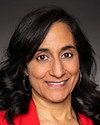Thank you, Minister, for appearing today. I'd like to echo all of my colleagues and say thank you so much for all your involvement in the CAF's efforts on this as well.
I would like to follow up a bit on what General Eyre just said. On the 31st, Transport Canada wasn't made aware of that first balloon, but it's my understanding that it was in the media. In fact, it was an Air Canada flight that encountered the balloon first and then reported it to NORAD. Just for clarification, was it NORAD that knew about it first, or was it in fact Air Canada?




